
The International Space Station is a state of art-science laboratory, flying 240 miles above the earth’s surface at 17,500 miles per hour, customized for helping humans learn how to live in space. It benefited scientists to figure out how the space environment and microgravity affect biology and human bodies with onboard experiments.
Launched in the year 1990 with the help of the Russian Rocket, it took two years in its appropriate assembly to host its first crew of astronauts and cosmonauts in its orbiting home at an altitude in space to live. More modules have been added since then.
So, the point of concern is HOW? How spacecraft carrying astronauts and cargo supplies, parts, modules, or the solar arrays affix with the space station? Do the engineers spell a charm, or does it involve a cutting-edge enginery?
What is DOCKING?
Joining two objects in space is called Docking. Thus, making it an integral part of modern spaceflight operations. ISS uses this technique to host parking of various other spacecraft from Earth with the help of ports present on different modules of the orbiter. This association involves three main gradual operations:
- Fine control of position and rotation of spacecraft.
- Station keeping and approach for docking.
- Docking.
Control:
Control of the incoming spacecraft is done precisely using Reaction Control Systems consisting of sets of small Thrusters around the spacecraft. Based on Newton’s third law of motion – “Every action has an equal and opposite reaction” – thrusters combust the fuel present in its combustion chamber, making an appropriate pressure by releasing gas.
It helps in pushing, slowing down, and rotating the spacecraft towards ISS as there is no air resistance in the space which may hinder the process. Reaction control system thrusters are made to be highly reliable, and they fire lots and lots of times as short specific bursts.
They use Hypergolic Propellants as combustion fuel. Hypergolic Propellants don’t need an ignition source. The engineering of the spacecraft is such that thrusters pump the fuel into the combustion chamber, made up of two chemicals.
When those two chemicals contact each other, they spontaneously combust and producing the relevant pressure, which helps astronauts in controlling their craft for a safe docking.
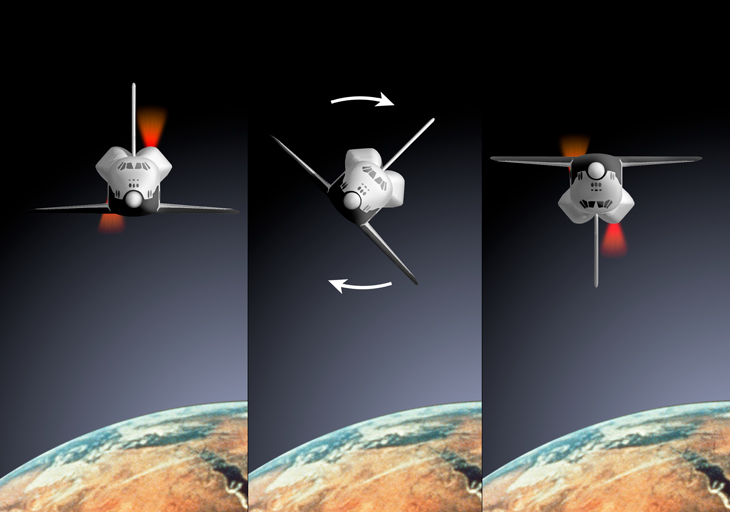
How thrusters control the arriving spacecraft (Image Credit: National Air and Space Museum, Smithsonian Institution)
Station keeping and Approach:
Station keeping and approach is essentially just firing of Reaction control systems now and then to make sure that the spacecraft holds a suitable position all the time relative to the target. As it is known that different altitudes relate to different speeds of orbits, so accordingly the spacecraft can be near the space station, but its orbit may not match the orbit of the target.
Moreover, as the station orbits the earth continuously, follows that as both the vehicles (incoming spacecraft and ISS) move a quarter of their way around, we will see the direction of the spacecraft pointing upwards relative to the space station as compared to when it arrived the destination orbit.
Therefore to stay at the same relative position with respect to the station, astronauts aboard have to make sure that they are firing the thrusters to account for the fact that it keeps their approach speed in the same direction of ISS until they get close enough to have its docking port physically unite with the docking port on the ISS.
Docking:
The heritage of docking systems used on the ISS is a combination of American and Russian Engineering over many decades, which is an interesting story in itself. There are three main docking systems used on the ISS right now.

Crew exploration vehicle docking with ISS (Image Credits: Science Photo Library)
Docking systems on ISS
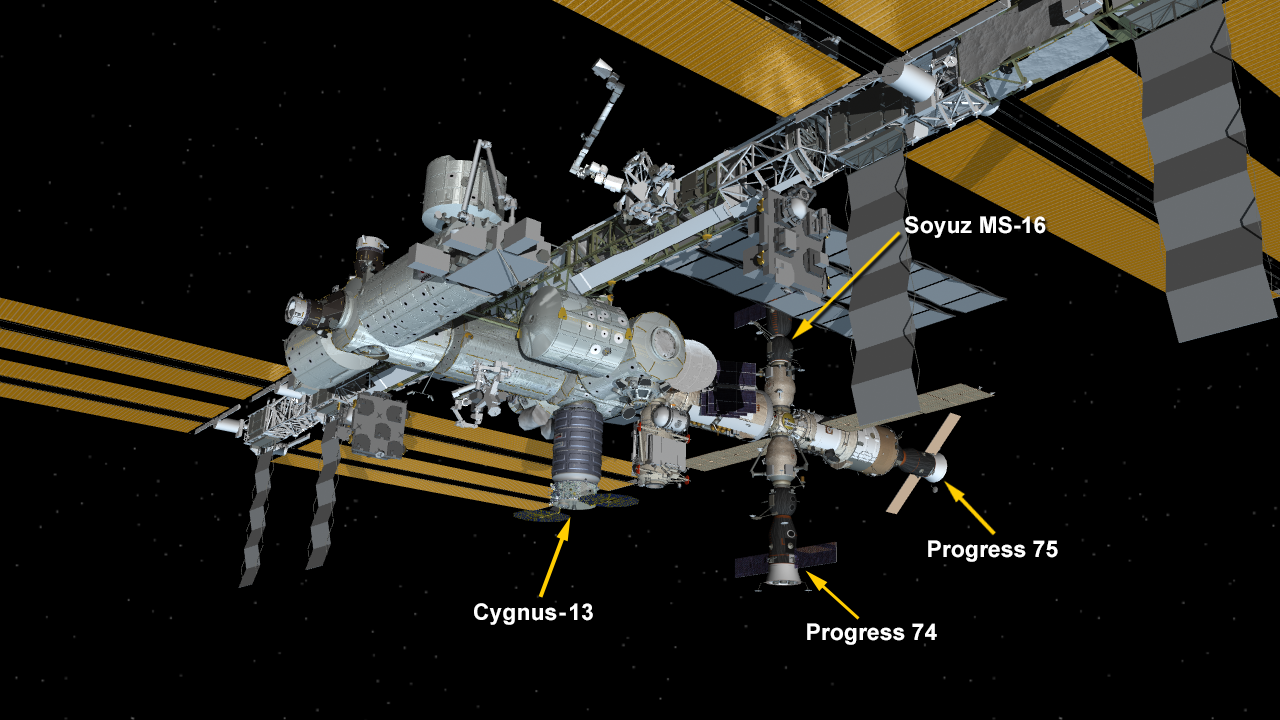
Different spacecraft docked to the station (Image Credits: blogs.nasa.gov)
First: The first one to address is a Russian one present on the Russian segment of the station used for docking Russian Soyuz and Progress Spacecraft. They are docking ports servicing with the help of Probe and Drogue Setup. The Probe is on the arriving spacecraft, and the Drogue is on the space station. The Drogue is just a cone with a broader opening area for the Probe to latch into.
When the reaction control systems on the spacecraft are firing, it is pushing the spacecraft in the direction of Drogue, and once the probe reaches the center of Drogue, it starts to retract, pulling the spacecraft into a proper fit with the ISS for the locking mechanism to take place. Once the station has a firm hold of the craft, the Probe and the Drogue together can open as a hatchway for astronauts to go through, inside the ISS.

Soyuz- ISS Docking Adaptor (Image Credits: Science Photo Library)
Second: The next docking system is called the International Docking Standard or The NASA Docking System, which was developed in accordance with international docking standards. It’s actually a regulation or an instruction booklet or a rulebook on ‘how to build a compatible spacecraft’ that will be able to dock at ISS’s international docking adaptors.
They are two of these (forward and zenith port), and they are located on the Harmony module of the U.S. segment. The advantage of having this standard is that different companies and countries can build their spacecraft that will be able to dock ISS without having to pay for an expensive contract with any specific company or government.
There are two spacecraft that can use these docking adaptors – SpaceX Dragon and Boeing Starliner – both being the biggies of the U.S.A.’s Commercial Crew Program. Over the approaching spacecraft, we have an active site of the NASA Docking System while the passive side of the system is on the space station.
This docking mechanism works by having two subsystems/ circular rings: Soft Capture System and Hard Capture System- each on both the space vehicles. The most prominent part of the soft capture system is aligned petals and passive strikers, which solicit the latching of the arriving module with the station.
The soft capture ring on the active side is held by six electromechanical linear actuators, which is essentially a threaded rod that can be extended, retracted, and rotated using an electric motor, hence enabling movement in all three axes of rotation and all three axes of translation.
Whereas, around the soft capture system, we have a hard capture system having 12 pairs of latches, two fine alignment pins, power, a data plug, and a data socket. Last and certainly not least, it has an elastomeric seal. Now let us look at the following brief successive steps to understand how the various parts actually operate.
-
- Before docking, the system is checked. The linear actuators of the active soft capture system are fully extended and retracted to make sure that there are no mechanical issues. Only then do the actuator position the soft capture ring in ready to capture position.
- When contact occurs, the soft capture system performs the Lunge, where the actuators push the active soft capturing forward into the passive one.
- After successful lunging, petals on the active side extend and strike the passive strikers to attenuate the relative motion between the two vehicles and to align active and passive hard capture systems by retracting the actuators.
- Once the two space vehicles are close enough, the hard capture latches are driven close into two groups of six. Here a closeup cut-away to look inside the hard capture latches. We can see one latch is made up of an active and a passive hook, and the other latch is made up of an opposite format. And they pull themselves together in such a way that they eventually compress the elastomeric seal between the two sides of the docking system.
- With hard capture complete, the power and data plugs are pushed forward into their respective sockets. Once this is done and leak checks are performed, the hatchways can be opened up. Subsequently, the astronauts can depart from the docked craft to the space station.
Third: Last, in order, the next docking system is not technically docking. Called the Common Berthing Mechanism, it has a bifurcated robotic arm – Canadarm, which locks up with a ring, of large diameter on approaching vehicle, when extended and then retracted back to seal the spacecraft with the orbiter.
It performs the precise fitting and can attach all the modules on the U.S. segment of the space station together. Because of this feature, it also allows astronauts aboard. While servicing outside the space station is to transport equipment, experiments, and machinery between the modules.

Berthing of spacecraft with Canadarm (Image Credits: www.wikiwand.com)
In summary, docking to ISS is cool, yet sort of underrated as something to watch since we tend to focus on launches and landings. It requires excellent precision, technically advanced hardware and spacecraft design, meticulous mission planning, analysis, and training.
NASA streams them all live through the NASA app, NASA TV, and NASA YouTube handle. It is always fun to watch it for space science enthusiasts because it not only provides remarkable glimpses of an excellent technical advancement, but also it assists in celebrating the victory, and just like that gives a real old-time thrill.
Suggested Reading: Nuclear Propulsion: The way to send humans to Mars
Author

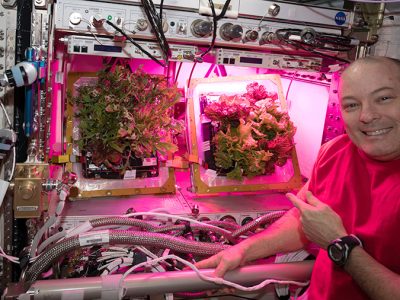


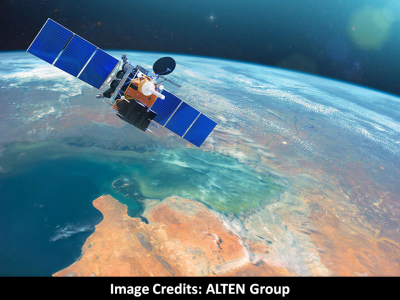

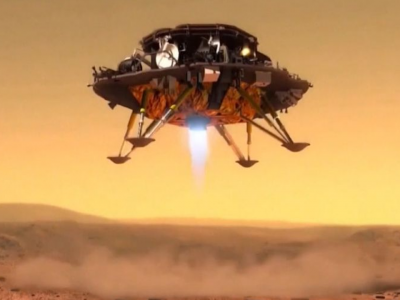







[…] Suggested Reading: Docking: ISS technique to park other spacecrafts […]